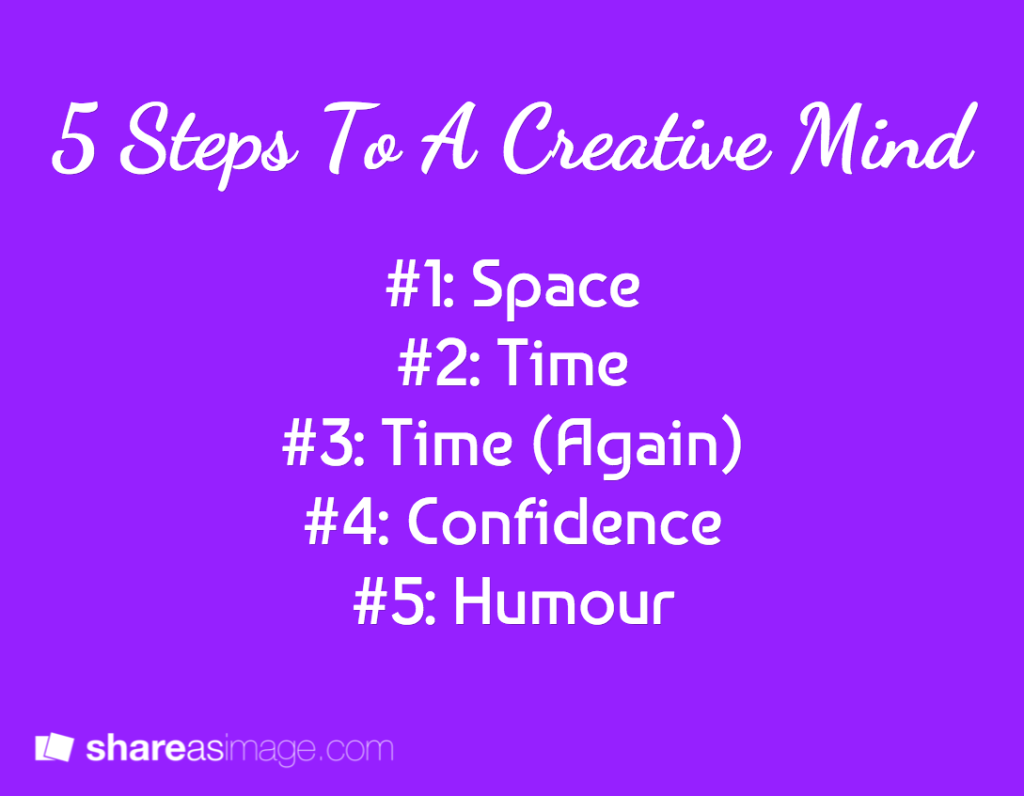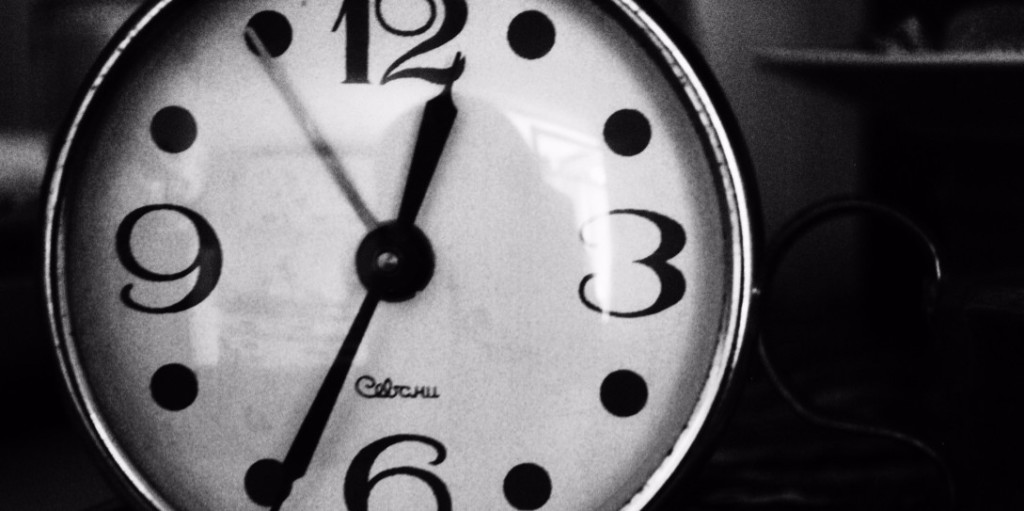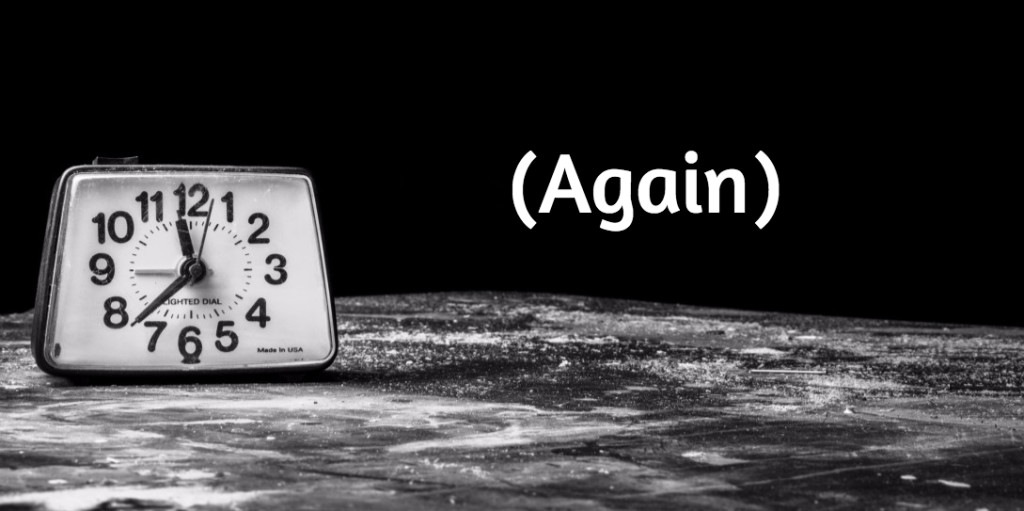Anthony Trollope was one of the world’s most creative writers.
In the 1800’s he regularly released novels over 700 pages in length, multiple times a year, and wrote whole series so long in length that Lord of the Rings looks like a short story.
And, he did all of this while working a full time job for the British Postal Service.
According to Stephen King in his book On Writing, he was able to stay so creative for one simple reason – his process:
“He wrote for two and a half hours before work. This schedule was ironclad. If he was mid-sentence when this two and a half hours expired, he left that sentence unfinished until the next morning.”
If he finished a book in that time too, he’d simply write The End, set it aside, and start writing his next book.
Now you’re probably thinking, “Wow, that’s insane! How can you be that creative, that often?” And, you wouldn’t be the only one.
The truth is, a creative process is all you need to be more creative. In fact, it’s the only part of creativity that you have any control over at all…
The Creative Process
John Cleese is a comedy legend – you might remember him from Monty Python, Fawlty Towers and A Fish Called Wanda – but he’s also a keen psychologist. And, not too long ago, he did a lot of research into the realm of creativity.
And in this research he came to the conclusion that:
“Creativity is not a talent, but a way of operating”
That is to say that you creativity isn’t a feature only a few people have. It’s something you can unlock.
For example, in comparisons between people who are deemed intelligent, such as Engineers and Writers, and those who aren’t, there was no difference in I.Q that suggests the smarter you are, the more creative you are.
As long as you have a base level of intelligence, you can be as creative as anybody else on the planet.
Which is great news.
But how do you unlock this creative potential hidden deep inside of you?
Well, Cleese points out there are 5 ways you can become more creative if you arrange them correctly.
These are:
- Space
- Time
- Time (Again)
- Confidence
- Humour
Now, there are no guarantees that any of these will give you your big idea instantly. As is the case with anything creative, there are good days, and there are bad days.
You could sit around for hours and get nothing, or you could sit down, sip your coffee and be hit with a freight train of original ideas.
As the man himself says:
“This is the extraordinary thing about creativity: If just you keep your mind resting against the subject in a friendly but persistent way, sooner or later you will get a reward from your unconscious.”
But what all of these steps will do, more importantly, is get you into an open mind. Which is the breeding ground for all creativity.

Open Your Mind…
There are two types of thinking when it comes to your work:
- The open mind
- The closed mind
The closed mind is where you spend most of your day. It’s where you complete tasks, think logically and get work done. This is your productive state of mind.
The open mind is where you need to get to if you want to be creative. It’s where you can be playful, curious and free from pressure. It’s the state of mind that lets you connect the dots, find clues and create solutions.
These five steps you’re about to learn about will help you get into that open mind more easily.
Step #1: Space
Pressure is a creativity killer.
In that, if you’re under the usual stresses and strains of day to life – your boss peering over your shoulder, super tight deadlines etc. – you’re not in the right mind set to be creative.
Because, understandably, your focus is elsewhere.
When your focus is on being more creative then, space can be a physical space – like a desk or a park or an office – or it can be mental space, away from the pressures and strains of daily life.
Or, it can be both.

This space doesn’t need to be clean, either. Some of the worlds most creative minds, from Einstein to Twain and Zuckerberg all boasted messy creative spaces.
All it needs to be is removed from your usual workspace, where you’d normally find yourself in a closed mind.
Think of places like:
- Parks
- Coffee shops
- Home offices
- Train Stations (Where Paul Simon penned Homeward Bound)
- Beaches
When I’m thinking of blog post ideas, or I’m stuck at a particular point, I like to go to places I’d feel comfortable meditating or reading a book.
Try choosing a spot that makes you feel like you’re in a bubble, where you’re sealed off from the outside world – and the stresses and strains that come with it – and you have your own ‘me’ time where you’re in charge and free from distractions or interruptions.
Step #2: Time
Have you ever heard of Parkinson’s Law?
It’s a simple rule that says the work you have to do will expand to fit the time you have to do it in.
Which means a 10-minute task can take four hours; if that’s the time you give yourself to do it in.
And understanding this law is important for creativity. Because while you need to give yourself a space to work on your big ideas, you also need to give yourself a timeframe to work to.
As Cleese himself says, “It’s not enough to create space; you have to create your space for a specific period of time.”
Because if you were to just sit and ponder, for an unlimited amount of time, the urgency to solve the problem – or reconnect the dots – is lost.

This is why deadlines are important.
Take a look at some of the more high-pressure creative industries, like Advertising. If you’ve ever watched Mad Men, you’ll have seen just how much pressure these guys are under.
George Lois, one of America’s greatest visual advertisers, famously stopped saying ‘No’ and started saying ‘Now!’ to projects with tight deadlines, because he could laser focus his creative in a short space of time.
And he created some incredible campaigns under those deadlines, like this one:

So when it comes to sitting in your new space, give yourself a defined amount of time to be there.
You need to know that your time in your space will definitely end at a specific time or after a certain amount of time.
It could be that you define yourself one hour every day, or that between 7:30am and 9:00am is your creative time. Either way, it’s important to know that when your reach this time limit, normal life will resume.
Step #3: Time (Again)
If you’ve ever tried to meditate, or spend some quiet time alone, you’ll know exactly what I’m about to say:
As soon as you sit in your quiet space, and begin to think, your mind starts to wander to your normal every day problems.
Phone calls you need to make, the emails you’ve not sent, that tweet you’ve not written and the fact you’ve not decided what you’re going to have for lunch yet.
Because, it’s easy to think about these problems. They’re what you’re used to thinking about. They’re habitual.
What’s important in this step then, is that you give yourself the time to think beyond this. You have to strap your mind down, work through these thoughts until your mind begins to quiet.

Now, for some of us, this can be a short process. After a year or so of mindfulness, I can quiet my mind in minutes. For you, it could take a little bit longer. The more practice you have at it, the quicker it will come.
The second part of time, is giving yourself enough time to think beyond the first solution that comes to mind.
When you’re faced with a problem, it’s easy to take the first solution that comes to mind. Because you have an answer, you’re busy, and it works.
But as research from Mackinnon has shown, thinking longer on the solution – even in the face of your first answer – can lead to more creative and original solutions. Because, if nothing else, you have another dot to try and connect.
So, unless you absolutely have to, you shouldn’t take your first solution. Take the second one. Or the third. Or the one that seems the most original and creative to you.
A good rule here is that if it seems outrageous to begin with, it’s probably original enough to work.
Step #4: Confidence
The opposite of creativity is fear.
Nothing will stop you conjuring up wonderful, magical, out of the box ideas as much as the fear of making a mistake.
That the image you’re making doesn’t conform. That your boss might not like it. That your readers will all shout at you about it. That your mailing list is going to burn you at the stake for what you’ve just thought.
But in this space, with the time you’ve given yourself, mistakes don’t exist.

You have to give yourself the confidence in your own abilities, and that the ideas you create, are good. No matter how out-there they seem.
Remember, to be creative is to play.
You’re always asking yourself, “What if?”:
- What if you did this?
- What if I did that?
- What if that went there, instead of here?
- What if you mixed these two colours?
You would never tell a child they built their Lego’s wrong. Or that the picture they painted, or the game they came up with all on their own, was stupid or bad.
So don’t do it to yourself, either.
It’s okay for things to be wrong. Your ideas to get rejected. Your colours to not match. You need to have the confidence in yourself that you’ll recognise these bad ideas – trust me, you’ll have them – and that you’ll spot the good ones too.
Step #5: Humour
Humour plays one simple role:
It’s the fastest route from the closed mode to the open mode. Because humour makes you more playful, relaxed and free from pressures than anything else.
But, as Cleese points out, you see certain situations as “too serious” for humour.

However humour doesn’t make a situation any less serious; it just leads to more creative solutions to problems.
For example, my Dad works doing Search and Rescue in helicopters. He’s seen everything from plane crashes, to war injuries and people having their ribs cracked open and their hearts massaged to keep them alive.
It is a serious job.
But when they’re flying out to a scene, they’re laughing and joking. All while they’re figuring out the solution of how to approach, what they need when they get there and how they’re going to rescue the casualty from X, Y or Z.
That isn’t in bad taste. It allows them to think more clearly, with less pressure, and see more solutions to the task at hand.
So, when you’re working on a solution – no matter how ‘serious’ – allow yourself to laugh and joke and giggle and enjoy the moment as much as possible.
Creativity: It’s All About The Process
There you have it.
If you want to be more creative you need to have a process. One that lets you slip into (and out of) the open mind quickly and effectively.
Now, while this still won’t guarantee that you’ll have a million dollar idea every time, if you allow yourself:
- Space
- Time
- Time
- Confidence
- Humour
You’ll find that you can generate more original and wonderful ideas than ever before.


Could you not find a creative woman to include among your references? Nor any person of color? Creativity is not the province of white men.
Hey Amy,
I’m sorry, but you seem to have read in to some subtext of this article that doesn’t exist.
I didn’t choose any of the people in this article because of their race or gender. And, it would never have crossed my mind to do so.
Cleese gave the talk on creativity, so he’s here by default. Stephen King and Anthony Trollope are here because their stories (and quotes) helped me make my points clearly.
Paul Simon is here because he wrote Homeward Bound at a train station a stones throw away from where I live in England. And, George Lois is here because I’m currently reading his book, “Damn Good Advice” and it made for a useful reference in this article.
And, if you’d have taken the time to read the article, I even point out that creativity isn’t something you either have or you don’t, it’s something that everyone can unlock from within.
There are countless people – of any combinations of genders, races and even sexualities – who are more creative than any of the people on this list. That goes without saying, because it’s not a point that needed to be made.
Now this is where I would normally extend an apology and say that no offence was intended, but I’m not going to in this instance, because there is nothing to apologise for.
Instead I’d just like to say that, in future, could you please keep opinions like this to yourself. You’ve managed to bring forward an argument that has nothing to do with the content (or context) of this article.
Thank you for reading.
Actually I read your article very carefully. My point, which I must suppose I did not make clearly, is that with the exception of Cleese and perhaps Trollope, you could have found other excellent examples and quotations from creative people who were not white, not male, or neither white nor male, and that doing so would have served your points well. I don’t dispute that you chose excellent examples in and of themselves. But by not making the effort to find other types of examples, you perpetuate the widespread impression that only white men are worthy of inclusion as examples of creativity in an article such as yours.
I didn’t ask for an apology. I do ask that you consider whether you might have better reached or better served a diverse readership had you included a more diverse pool of exemplars; whether you might not have made your points more effectively had you not limited your examples to people who look like you.
You say that “There are countless people any combinations of genders, races and even sexualities – who are more
creative than any of the people on this list. That goes without saying,
because it’s not a point that needed to be made.” I am certainly glad that you recognize that all kinds of people can be and are creative. But I’m afraid it really doesn’t go without saying when women and people of color are routinely, systematically, under-represented in the creative professions, as indeed they are. If you haven’t noticed this, it’s because you haven’t been paying attention. I think that’s a pity.
Hey Amy, thanks for sharing your thoughts. And while I see the merit in what you’re saying, I’m afraid we’re going to have to agree to disagree right now.
Take care.
Excellent article on creativity! As a creative person myself, I find myself doing these listed items somewhat naturally (or perhaps taught in the line of fire). It’s really interesting to see them spelled out here to refine them somewhat.
I worked in an advertising agency in the past and being creative on demand is tough, but do-able. That time crunch, no matter how restricting it seemed, forced us to be creative. I now work for myself, as a fine artist, and have found I kind of miss the deadline. My self imposed ones occasionally get kicked to the curb.
I enjoyed your article. Nice response to the Negative Nancy, btw.
Hey Jaime,
Thanks so much for your kind words (and support)! It’s always amazing what you pick up from just showing up and trying to be creative. But, like you say, the more you can refine the process the better.
Deadlines are a little like teachers at school. When you’ve got them, you want nothing more than to rebel against them and moan about them. It’s only when they’re gone you see their value.
Thanks heaps for “resting your mind against this subject” James and writing this excellent piece on creativity. Well done.
I especially enjoyed the idea that deadlines actually assist in creativity rather than detract from it – something that I previously thought was the case. I am definitely going to start using the “NOW!” philosophy.
Amy thanks for sharing your thoughts on the article. If I may be so bold to offer the thought that you are actually doing a lot of harm to your obvious agenda by using the approach you are. You waded straight into James article with discourteous comments, which you were then rewarded with an unsympathetic reply.
A suggestion would be to take on the “be that change you wish to see in the world” as given to us by Mahatma Ghandi. Leave behind the whining, moaning, poor-me approach and take on exactly what the article encouraged us all to do.
Including;
Open our minds
Be friendly
Apply humour
Be confident
Here is an alternative way you could have written your comment.
Thanks James for taking the time to put together this excellent article on creativity. You have certainly made me think about things differently which is what great writers do.
I also loved the examples from history that you have used to add depth to the composition. It reminds me of (insert name of person) who made an incredible impact by creating the (insert positive contribution to the world). They continue to inspire me today with their creativity, just as you have with your article.
Thanks again James for allowing your light to shine.
Warmest Regards
Amy Stoller
From your written response Amy I immediately googled your name trying to work out who you are and why you are such a trouble maker. Which makes me a poorer person and allowed bitterness and hatred to dwell in my heart.
If I had of read the above I would have immediately googled the (persons name you inserted) and read about their important contribution to the world. Which would have made me a richer person, and also everyone else who responded in like manner. It would also have further affirmed my core belief that every single person on this earth is an incredible masterpiece with amazing things to offer.
From what I understand the latter is probably the response you would most want the wider world to have.
I think you will find Amy by taking a different approach to further your cause you will attract more people to you and become more influential, which will ultimately help to spread the word about those things that are really important to you. You will find that other people are highly attracted to people who offer solutions rather than focus on problems.
The best you can hope for using your current approach is what you already received in writing from James and most likely worse. Which will only repel people from and ultimately actually make it a lot worse for the people you are wanting to help.
Of course these thoughts are my opinion and you are under no obligation whatsoever to have to agree with them or even take action as a result. However I will sign off here with a faint hope in my heart that you do at least ponder them and possibly decide that you will ultimately always attract more flies with honey than you do vinegar.
Warmest Regards
You’re OK
Thanks for your comment and support, my friend 🙂
Love the John Cleese quote ““This is the extraordinary thing about creativity: If just you keep
your mind resting against the subject in a friendly but persistent way,
sooner or later you will get a reward from your unconscious.” – essentially just show up – have discipline.
Seth Godin has a similar view of just “turn up every day”.
If you turn up and try your hardest every day, eventually you’ll have a breakthrough. It just takes time and effort.
So, what have you been showing up for lately, Nadia?
Excellent blog, James. Thank you for the clarity. It’s fascinating to hear John Cleese speak rather than be the comic; almost confuses me to watch him not being a Python or Basil… I guess that makes what he says even more powerful? I have reblogged this post on my own blog.
Thank you so much for this article. I /really/ needed to read #4!